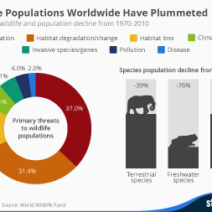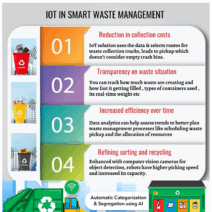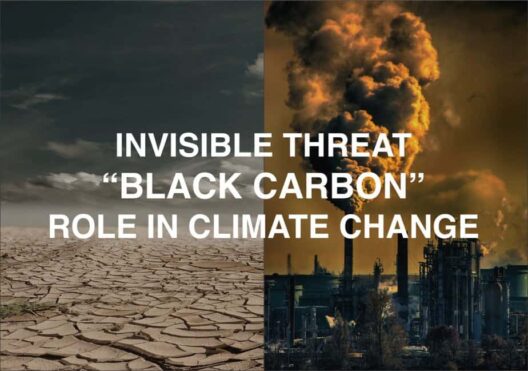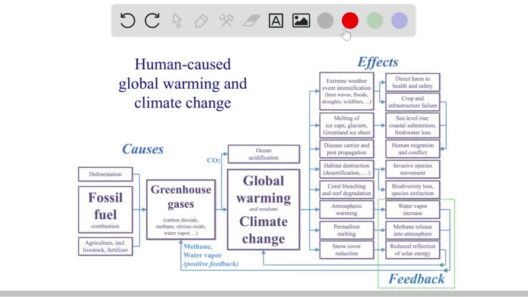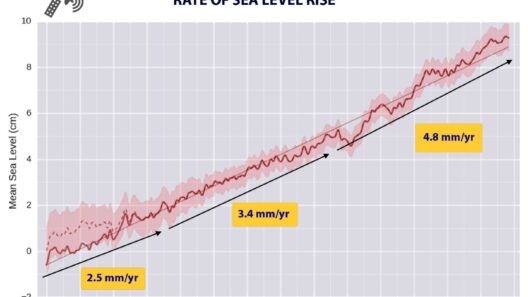With the increasing urgency surrounding climate change, one of the most pressing phenomena garnering attention is the rise in sea levels. This seemingly straightforward observation raises profound questions about its implications for coastal communities, marine ecosystems, and global weather patterns. Tracking the increase in ocean levels across the globe unveils a narrative marked by complexity and gravity, inviting us to scrutinize not just the facts, but the deeper forces at play.
The phenomenon of rising sea levels is predominantly driven by two main factors: thermal expansion and the melting of land-based ice. As global temperatures elevate, seawater expands, resulting in higher ocean levels. Concurrently, glaciers and polar ice sheets are melting at an alarming rate, contributing additional water to the seas. Combined, these elements paint a picture of urgency that goes beyond simple measurements – it’s an environmental crisis that calls for immediate attention.
The global average sea level has risen approximately 8 to 9 inches since 1880. However, the narrative of sea level rise is far from uniform. There are significant regional disparities that highlight how complex and dynamically interwoven the climate system is. For instance, areas such as the East Coast of the United States experience rates of sea-level rise that are substantially higher than the global average due to several local factors including land subsidence, ocean currents, and melting ice in Greenland.
The allure of tracking sea levels lies not only in its numbers but also in its profound implications for humanity’s future, particularly for coastal communities that reside at the frontlines of this crisis. A 2019 study projected that by 2050, global mean sea levels could rise by an additional 1 to 2 feet, putting millions of people at risk of displacement. Vulnerable regions such as the Maldives, Miami, and parts of Bangladesh are already grappling with heightened flooding, saltwater intrusion into freshwater supplies, and the dismantling of local economies. The prospect of “climate refugees” fleeing their homes in search of safer ground adds a layer of sociopolitical tension to the ongoing discourse about rising sea levels.
Understanding the implications requires a closer look at the science behind this alarming trend. The Intergovernmental Panel on Climate Change (IPCC) has indicated that if global temperatures continue to rise, we may witness a cumulative sea-level rise of up to 3 feet or more by the end of the century. This estimation is based on various emission scenarios and the consequent response of glaciers and ice sheets. Particularly, the West Antarctic Ice Sheet is of great concern. Should it collapse, which scientists believe could happen under continued warming, the resulting impact on global sea levels could be catastrophic.
Yet, the most tangible aspect of tracking rising sea levels is the instrumentation and technology employed. Satellite altimetry has revolutionized our ability to measure sea levels with unprecedented precision. Instruments like NASA’s Jason satellites have provided insights into short-term fluctuations caused by storms, as well as long-term trends that paint a broader picture of change. Their data is invaluable not only for scientific research but also for policymakers who need to make informed decisions regarding urban planning and disaster preparedness.
Moreover, it is imperative to consider how societal response tends to lag behind scientific evidence. Despite an abundance of studies and projections outlining the consequences of rising sea levels, public perception often remains grounded in disbelief or uncertainty. Misinformation, political inertia, and lack of urgency contribute to the challenges in implementing robust climate action plans. For instance, while some regions are increasing their investments in resilient infrastructure, others remain woefully unprepared, highlighting an inequitable distribution of awareness and resources.
Furthermore, the ecological ramifications of rising sea levels cannot be understated. Coastal wetlands, mangroves, and coral reefs serve as critical buffers against storm surges and habitat loss, yet they are increasingly threatened by encroaching waters. As saltwater permeates freshwater ecosystems, biodiversity suffers, which further destabilizes local economies reliant on fisheries and tourism. Protecting these ecosystems is not merely an environmental concern; it is an economic imperative that secures livelihoods and sustains food sources.
The urgency of addressing rising sea levels extends into the realm of global cooperation. Climate change knows no borders, and its consequences are felt across the globe. Initiatives directed towards reducing carbon emissions, conserving marine ecosystems, and enhancing community resilience are paramount to ameliorating the future impacts of sea-level rise. International agreements like the Paris Accord signify collective acknowledgment of this looming crisis, yet the disparity in commitment levels among nations remains a significant barrier to effective action.
As we continue to monitor the intricate patterns of sea-level rise, it is vital to remember that this is not merely a numerical increase; it reflects a myriad of socio-economic vulnerabilities and ecological challenges. The narrative extends beyond curb-stoning the escalating numbers; it urges us to confront the uncomfortable truths about climate action, community resilience, and global cooperation. The time to act is now, for our future hinges on the decisions we make today concerning the fate of our oceans and communities that inhabit the shores of our planet.
